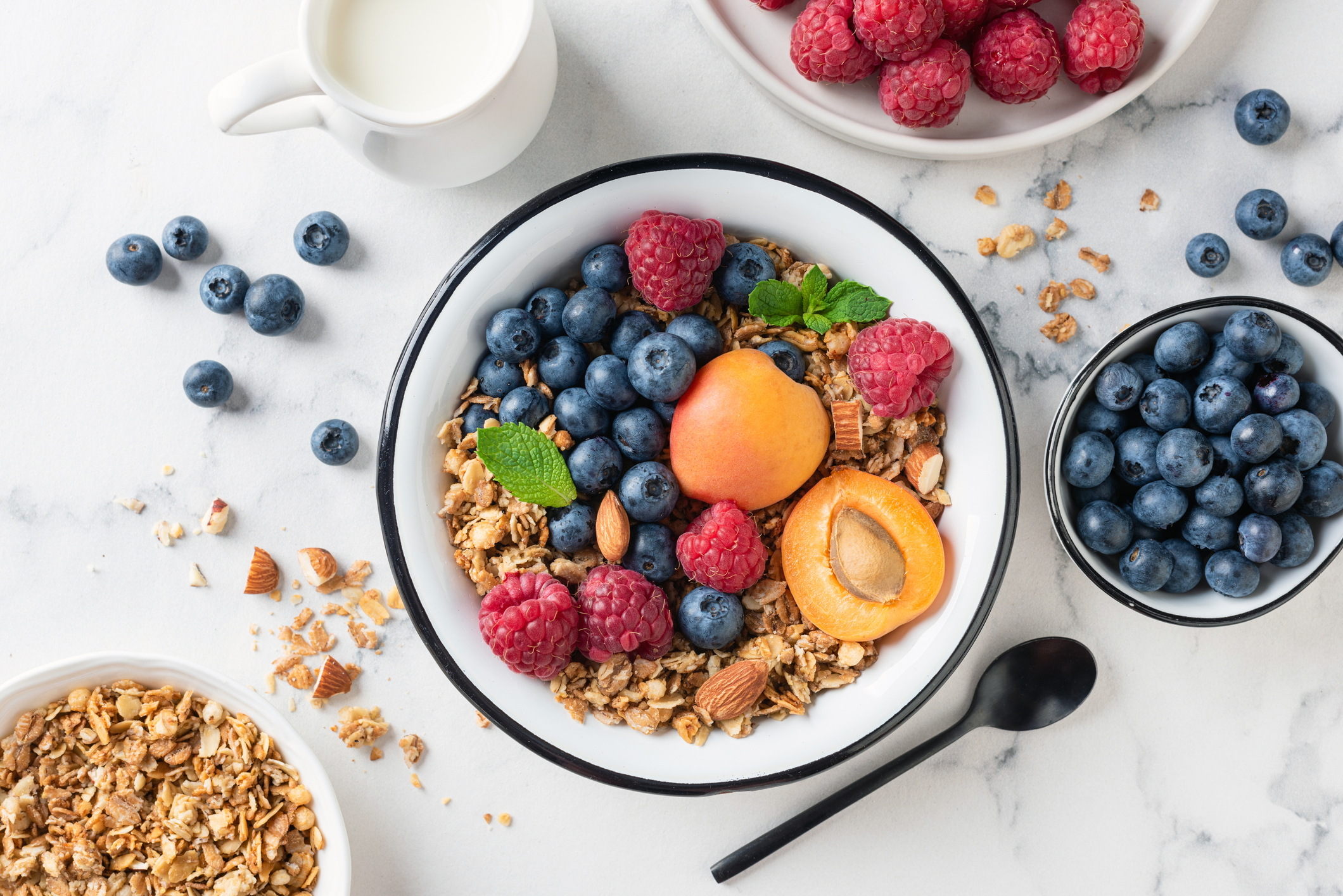by Brandy Abalos
Many people do not immediately think of fiber as a priority in their diet, but it has a lot of benefits that help them remain healthy. Fiber plays an essential role in how people’s bodies process food. In fact, without fiber, their bodies wouldn’t be able to take advantage of the benefits of many other nutrients.
What Is Fiber?
Fiber is a type of indigestible carbohydrate. While most carbohydrates are broken down into glucose, a type of sugar, fiber cannot be broken down the same way. Instead, it passes through the digestive system intact.
The two types of fiber are soluble and insoluble. Soluble fibers dissolve in water, lowering LDL (“bad”) cholesterol and balancing blood sugars. Insoluble fiber, which does not dissolve in water, helps with appetite control, regular bowel movements and reduced risk for Type 2 diabetes.
How Does Fiber Work?
Fiber has many functions. It can help keep hunger in check and blood sugar balanced. It also acts as a prebiotic, which is a substance that alters the types and activities of the bacteria that live inside the gut. These microflorae can decrease inflammation, boost healthy immune function and improve colon health, all of which offer protective effects against various diseases.
Benefits Of Having a Fiber-Rich Diet
There are many reasons to eat fiber. Studies indicate that it may:
- Lower your bad (LDL) cholesterol
- Decrease your risk of developing cardiovascular disease
- Decrease incidence of inflammation
- Decrease mortality risk from circulatory and digestive diseases
- Reduce your risk of some types of cancer
- Improve insulin sensitivity
- Aid in glycemic or blood sugar control
- Help control weight and appetite
- Prevent and relieve constipation
- Increase calcium absorption and support bone mineral density
Foods That Are Rich In Fiber
While you can take fiber supplements, consuming fiber-rich foods is the best way to get enough fiber in your diet. Soluble fiber can be found in fruits, legumes and oats. Insoluble fiber can also be found in wheat, bran, vegetables and fruits. Some of the highest fiber-containing foods include:
- Beans and lentil
- Figs
- Artichokes
- Squash
- Berries
- Prunes
- Apples
- Popcorn
- Apricots
- Foods that contain bran
- Wholegrain foods
- Peaches
- Carrots
- Almonds
- Onions
- Nuts
The United States Department of Agriculture (USDA) also recommends that half of your fiber should come from whole grains. When you eat whole fruits and vegetables, you should also eat the fiber-rich skin.
How Much Fiber Do You Need?
According to the USDA, very few people get the fiber they need in their diet. Daily fiber needs vary according to age and gender. The USDA recommends daily fiber intake according to the following:
- Children aged 1 to 3: 19 grams
- Children aged 4 to 8: 25 grams
- Boys aged 9 to 13: 31 grams
- Girls aged 9 to 13: 26 grams
- Boys aged 14 to 18: 38 grams
- Girls aged 14 to 18: 26 grams
- Men aged 19 to 50: 38 grams
- Men aged 50+: 30 grams
- Women aged 19 to 50: 25 grams
- Women aged 50+: 21 grams
- Pregnant Women: 28 grams
- Lactating Women: 29 grams
If you need to increase your fiber intake, you should do so gradually and drink plenty of fluids to avoid stomach upset.








Leave A Comment